Jacques Côté is the founder and serves as Chairman of the Board at Solmax, the largest geosynthetics manufacturing group in the world. Mr. Côté helped establish the IGS Foundation in 2019 and currently is running for a new, full four-year term on the Council now.
IGS North America encourages all members to actively participate in the IGS Elections, which are open for voting into mid-June. If you cannot locate your ballot invitation, please contact IGS office, igssec@geosyntheticssociety.org.
As you seek a second term on the IGS Council, what are you proudest of with the IGS from the past four years?
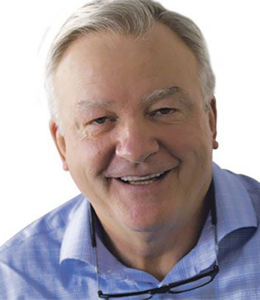 The achievement that I am most proud of over the past four years was gaining from the IGS Council an approval for the establishment of the IGS Foundation in 2019. To date, the mission of the IGS Foundation is to support educational initiatives capable of understanding and promoting the appropriate use of geosynthetic technology throughout the world, thus enabling a reduction of our carbon footprint for the benefit of humanity. This mission fully supports the IGS mission statement that is “To provide an understanding and promote the appropriate use of geosynthetic technology throughout the world.”
The achievement that I am most proud of over the past four years was gaining from the IGS Council an approval for the establishment of the IGS Foundation in 2019. To date, the mission of the IGS Foundation is to support educational initiatives capable of understanding and promoting the appropriate use of geosynthetic technology throughout the world, thus enabling a reduction of our carbon footprint for the benefit of humanity. This mission fully supports the IGS mission statement that is “To provide an understanding and promote the appropriate use of geosynthetic technology throughout the world.”
After decades spent building your company, what inspired you to focus on IGS Council service and helping launch the IGS Foundation?
Giving back for me was my way of saying thank you for what I received. From a professional and human point of view, the geosynthetics industry has brought me a lot. Now was the time to give back to this great industry, so the main goal is to protect our world today for the benefit of future generations.
Are there specific endeavors you hope the IGS Council puts a stronger focus on in next Council cycle?
I believe that a major effort must be put on greater involvement of all IGS members in the realization of the vision of their Society. For my part, I would like to work to bring together Corporate Members to obtain their collaboration in the achievement of the IGS sustainable development vision with regard to the use of geosynthetic products in applications for the reduction of greenhouse gases. This endeavor will preserve the quality of life for our future generations. It would also be important to emphasize the promotion of all the services and tools that the IGS has developed over the last few years and which are not used enough by the people and organizations who need them most, because many of them do not know that these resources exist.
Finally, I believe that it is important to have a strong link between the IGS and the IGS Foundation to ensure a harmonious alignment of these two entities toward the future. I am certainly the person who could fulfill this role!
What exciting opportunities do you see coming for the geosynthetics field in the next few years?
What I see in the next few years is a significant increase in the use of geosynthetics for two main reasons. The first is for cost reasons: applications using geosynthetics can replace large volumes of natural materials, thus making the purpose of a project more economical. Secondly, for environmental reasons: the use of geosynthetics allows the preservation of our natural resources and makes it possible to reduce the carbon footprint in the realization of our infrastructure projects. Moreover, in the years to come I also see great efforts that will be employed in our industry to innovate. In this respect, we have at my own company a group of dedicated people so the raison d’être is to find disruptive technologies in relation to the use of geosynthetics both from a products and applications point of view.
All superheroes have an origin story. How were you introduced to geosynthetics?
My dream when I was an engineering student in Canada was to do international cooperation and more specifically to build roads in Africa. At the end of my studies in 1978, I was offered the opportunity to work in a small manufacturing company (TEXEL) which manufactured non-woven products, therefore a new product called geotextile. They needed a young engineer to do the technical and commercial representation of this new product. My first geotextile initiator was Jean-Paul Drouin, a mentor who introduced me to the technology of needlepunched nonwoven products and marketing techniques for these products. On the other hand, I was far from my dream of adventure of going to build roads in distant countries. In July of the same year, I had the chance to attend a conference in Manchester, UK on geotextiles and their applications. This is where I met my second initiator. During this conference there was a presentation made on the subject by the ‘young and dynamic’ Dr. Jean-Pierre Giroud from the University of Grenobles. I was impressed by the clarity and eloquence of his talk on the functions of geotextiles and the obvious advantages of using these new materials in civil engineering infrastructure applications. My conclusion was immediate: I’m in the right industry!
There is a lot to do and I like challenges. My third and fourth initiators were Dr. André Rollin from the Polytechnic School of Montreal who had Bob Denis as a master’s student. These two persons allowed me to evolve in the learning of geosynthetic technology. They have been apostles and builders of our industry.
Finally, today I can confirm to you that I made the right decision to make a career in this beautiful industry that is geosynthetics. I have never built roads in Africa but I have supplied geosynthetics to build them and installed thousands of square meters of them during my years on construction sites all over the world. In the end, however, I succeeded in realizing my adventurer’s dream.
THE 2022 “5 QUESTIONS” SERIES FOR THE IGS ELECTIONS
Erol Tutumluer, Ph.D., is the Abel Bliss Professor in Engineering, Director of International Programs, and Paul Fraser Kent Faculty Scholar at the University of Illinois Urbana-Champaign. He is the Editor-in-Chief of the Transportation Geotechnics journal and for the past two years has served on the IGS Council. A member of IGS North America, Dr. Tutumluer is running for a new, full four-year term on the Council now.
IGS North America encourages all members to actively participate in the IGS Elections, which are open for voting into mid-June. If you cannot locate your ballot invitation, please contact IGS office, igssec@geosyntheticssociety.org.
What would you like to see the IGS achieve in the next four years?
IGS is a s a learned society dedicated to the scientific and engineering development of geosynthetics. The successful mission will require education, awareness and trust from the users of geosynthetic materials. IGS will have to nurture the understanding that geosynthetic materials have truly become common and necessary components of sustainable construction practices all around the world. Yet, they are still not covered in our undergraduate required courses at most universities and only limited coverage in graduate courses. There is a tremendous potential to teach more about the significant benefits of constructing with geosynthetics to graduating, practicing and agency engineers.
I was fortunate to become a co-opted IGS Council Member in the last two years when I volunteered to serve on Education and Communication Committees. I believe success will come through reaching our education goals, such as through Educate the Educators (EtE) programs, the IGS Digital Library and web-based training materials, professional development hours and short courses, and communicating to the end user the significant benefits of geosynthetics. In addition, as a Council member, I was honored to serve as the first Chair of a new Publication Committee with the mission to ensure consistent high quality across the range of IGS’s published educational and training materials. I believe this is because of my Editor-in-Chief role for the Transportation Geotechnics Elsevier journal and relevant experience. I would like to continue to serve on these committees and do my best to add to the success of IGS mission by contributing to the scientific and engineering development of geosynthetics as an independent university researcher and also pursuing the IGS education goals and the high-quality standards of IGS publications and training materials.
You are active with various geotechnical events and professional groups. How do you balance the demands for involvement from different organizations?
I have been active in geosynthetics engineering research, education, and practice for more than 20 years with research interests and expertise in characterization of pavement and railroad track geomaterials, i.e., subgrade soils and base/ballast unbound aggregates, soil/aggregate stabilization and geosynthetics. On these transportation geotechnics topics, there is an opportunity to focus on the advantages of being involved with multiple groups, like the sister society ISSMGE, and what those perspectives/connections can bring. For example, in May 2021, I chaired the 4th International Conference on Transportation Geotechnics (ICTG), a specialty conference of ISSMGE Technical Committee (TC) 202 on Transportation Geotechnics held every four years. For the first time in this 4th ICTG event, we started an IGS Keynote Lecture series and IGS President Prof. Chungsik Yoo delivered the first keynote speech. Certainly, these connections with IGS helped to organize one geosynthetics preconference short course and attracted more than 34 geosynthetic-themed paper presentations at the 4th ICTG event. I am also a member of the ASCE T&DI and Geo-Institute and served as the Chair of the ASCE Geo-Institute’s Pavements Committee in 2006-2012. I am an active member of the AREMA Committee 1 on Ballast. For the Transportation Research Board (TRB), I am the Chair of AKG00 Geology and Geotechnical Engineering Section, and I served as a member of the AKG80 Geosynthetics Committee from 2012 to 2021. My involvement in different organizations, all linked to geosynthetics use in transportation applications, greatly benefits IGS in relation to the synergistic efforts and Education and Publication Committee activities.
What does your experience tell you about the professional development needs in the classroom and field, regarding geosynthetics?
As a professor at the University of Illinois at Urbana-Champaign, I can tell you that even in a large civil and environmental engineering program like ours, geosynthetics courses are not offered as required curriculum and any new geosynthetics course offering depends on finding an interested faculty member. IGS will need to do more than just providing the slides and necessary training materials to the educator. In my belief, we need to recruit faculty members and get them interested in doing geosynthetics research and education. An excellent way to nurture this concept is to support young researchers in academia with IGS scholarships and get them involved in the industry and familiarize themselves with the variety of geosynthetic materials and their significant benefits in engineering applications. These young academic members are then likely to become friends and advocates of the geosynthetic industry with established close ties and committed professional service to train practicing and agency engineers. They will be the ones to deliver professional education to experienced engineers in presentations, lectures, and short courses around the world.
What exciting opportunities do you see coming for the geosynthetics field in the next few years?
Recently, I taught a short course for a very successful Geosynthetics University (GeoU) industry program, which not only attracted professionals but to our surprise several graduate students from universities were also among participants. This clearly indicates the interest as well as the need to do better in reaching out to professionals of all ages and promoting research and education. In addition, IGS will need to promote more university research studies on geosynthetics through seed funds that may be provided to university faculty and researchers. It is often very beneficial to convince a university researcher to waive the flag about why certain geosynthetic materials work in some engineering applications and communicate the research findings to federal and state agency representatives. This is because often these university researchers will be the ones to draft certain provisional standards for geosynthetics use. Industry and university partnerships in this regard will bring unity and much more convincing statements to agency for adoption of commonplace geosynthetics use. Finally, upcoming conference events, such as the Geosynthetics 2023 in Kansas City and GeoAmericas 2024 in Toronto we all look forward to, will provide the venues to disseminate research findings and the knowledge.
All superheroes have an origin story. How were you introduced to geosynthetics?
My introduction to geosynthetic materials goes back to a graduate course I took in geosynthetics at Georgia Tech during my PhD studies in early 1990s. Later, as an Assistant and Associate Professor, I pursued geosynthetic-industry sponsored projects through contacts within the manufacturers. This is because I already had the knowledge and the background on geosynthetics through the Georgia Tech course. My first research effort that involved geosynthetic use was through an Illinois DOT sponsored project in the early 2000s. Before that project was completed, I already started a research effort with a major geogrid manufacturer and the scope included field testing and modeling of geogrid stabilized pavement aggregate base courses. Since then, I have been conducting research studies with geosynthetics.
THE 2022 “5 QUESTIONS” SERIES FOR THE IGS ELECTIONS
Every four years, the International Geosynthetics Society (IGS) convenes the International Conference on Geosynthetics (ICG). The ICG is a major technical and commercial exchange in the geotechnical engineering field, drawing leading practitioners, producers, and researchers from around the world. IGS North America is proud to announce that it has been chosen to organize and host the 13th International Conference on Geosynthetics (13 ICG) in Montreal.
The conference and exhibition will be held at the Palais des congrès de Montréal from 13 – 17 September 2026.
“This will be the first time the ICG will be delivered in Canada,” says IGS North America President John Allen, PE. “We are honored to have been selected by the IGS Council to organize the event in such a major center of research, manufacturing, and design.”
The bid was selected on April 7 by the voting members of the IGS Council, following virtual presentations by three competing IGS Chapters. The IGS has 44 international chapters and 4000 members. Their geotechnical insight and material innovations are utilized in every major sector of civil engineering and contribute to significant improvements in infrastructure service lives, environmental protection, and society in general.
“We chose the theme ‘Legacy, Evolution, and Revolution’ to reflect how scientific and engineering progress is achieved through clear understanding of where the field has been and what is required of it in the future,” says Dr. Ben Leshchinsky (Oregon State University), who will serve as co-chair of 13 ICG alongside Villanova University’s Dr. Kristin Sample-Lord, PE.
Leshchinsky will begin his term as IGS North America’s President in 2023.
“When we talk about future needs and how geosynthetics are involved, we’re talking about much more than new designs and solutions for roads or water resource management,” says Dr. Sample-Lord, the Vice President – University Outreach for IGS North America. “It’s also about how we train the next generation of engineers. It’s about diversity, equity, and inclusion. It’s about how geotechnical practice improves society.”
The initial topics selected by the chapter to center the 13 ICG program are transportation infrastructure; climate change, natural disaster mitigation and response; and energy and mining. The bid was supported by endorsements from the ASCE Geo-Institute, leaders of ASTM Committee D35 on Geosynthetics, the GeoEngineering Centre at Queen’s-RMC, the Geosynthetic Institute, and other major organizations.
The chapter will begin assembling the event organizing committees and announcing further conference and exhibition details soon.
About IGS North America
The Mission of IGS North America is to provide leadership in advancing geosynthetics education and research to attain their appropriate and widespread use as engineering materials as the Chapter of the International Geosynthetic Society (IGS) for the United States of America and Canada. The chapter hosts webinars and in-person events and its members serve as leaders in all geotechnical engineering sectors, such as waste management, sustainability, environmental protection, coastal resilience, and mining. Learn more at www.igs-na.org.
About the International Geosynthetics Society
The International Geosynthetics Society (IGS) is a learned society dedicated to the scientific and engineering development of geotextiles, geomembranes, related products, and associated technologies. IGS is a global community of 4,000 members including corporate, individual, and student members, with a shared passion for how geosynthetics can make a fundamental contribution to meeting societal challenges through sustainable technological and engineering solutions. Learn more at www.geosyntheticssociety.org.
About the Palais des congrès de Montréal
The Palais hosts over 350 events each year. As a major hub of activity in Montréal, it generates significant economic, social and cultural benefits for the tourism, business and research industries. The Palais is a trailblazer in the industry and works hand in hand with local strategic partners as well as young, highly innovative start-ups gathered under the name Events Lab. As a leader in sustainability and social practices, it was one of the first convention centers in the world to operate a carbon-neutral building. The Palais is widely known as a proud supporter of emerging talent, the arts and community-based initiatives and is an innovative and resolutely forward-looking partner. Visit https://congresmtl.com.
Graduate and undergraduate students: please consider joining IGS North America for free. Registration can be completed online at www.IGS-NA.org. As a member you will receive the IGS News, online access to the Geosynthetics International Journal and Geotextiles and Geomembranes Journal, and secure access to various International Geosynthetics Society conference proceedings (totaling more than 1800 technical papers). You’ll also receive an IGS lapel pin, access to the IGS online membership directory, and eligibility for IGS Awards, including the prestigious IGS Student Paper award program ($1000 scholarship to attend a regional conference) and/or IGS Young Member award.
Current IGS North America members – PLEASE forward this membership offer to current university/college students.
SEE ALSO: 2019 Student Paper Competition
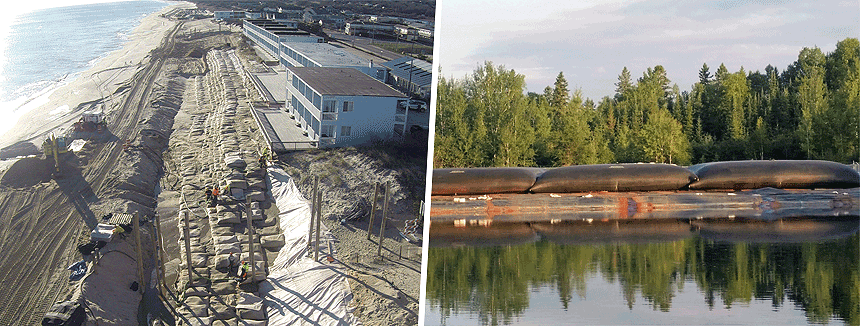
The International Geosynthetic Society (IGS) announces:
Geohydraulics in New Orleans LA
November 7 – 9, 2017
Two Separate Events to Support the Development and Implementation of Geohydraulic Technology
The International Geosynthetic Society (IGS) Technical Committee on Hydraulics will host a committee meeting and Think-Tank to discuss three emerging technical topics. This discussion will bring together some of the top-contributors in geohydraulics community to strategize about the path forward on each subject, including considerations of technical consensus vs continuing technical needs, educational efforts and potential publications. Selected individuals will be requested to serve as facilitators to foster discussion and interaction.
For event 2, there will be a two-day engineering seminar on state-of-practice design & construction for coastal and river protection in North America. Attendees at this course will be exposed to the range of technologies available to address hydraulic management. Instructors will address design: criteria, methods & codes – and provide guidance for the evaluation of product performance and selection. Attendees will receive 16 PDH or 2 CEUs.
EVENT 1 – Geohydraulic Experts’ Think-Tank & Committee Meeting
Renaissance Pere Marquette New Orleans – November 7, 2017
$100/person
EVENT 2 — Geohydraulics I – Geosynthetics for Coastal & River Protection
Renaissance Pere Marquette New Orleans – November 8 – 9, 2017
Costs: $650 Member | $670 Non-Member
Presented by: The International Geosynthetics Society, Technical Committee on Hydraulics.
Learn more about the IGS-TCH Hydraulics Week.
Exhibit And Sponsor Opportunities are also available.
REGISTER TODAY Educate The Educators
Educate The Educators
A Geosynthetics Training Program for University Professors
4-5 December 2017, Queen’s University, Kingston, Ontario, Canada
Too many young engineers enter the field without state-of-the-art geotechnical knowledge because their formal schooling overlooks a key discipline in current geotechnical practice: GEOSYNTHETICS
 Let the geosynthetics community provide you the resources to teach your students about geosynthetics!
Let the geosynthetics community provide you the resources to teach your students about geosynthetics!
We know that many undergraduate engineering programs lack geosynthetic instruction, often instructors may not have the resources, confidence or materials to effectively teach geosynthetics. In order to address this the IGS-NA offers Educate the Educators (EtE), a 2-day, funded program for university professors.
EtE provides specialized, hands-on training and lecture materials to equip attending professors with the tools they need to offer effective geosynthetics course work in their engineering programs. Attending professors receive instruction, course materials (including power point presentations, hand outs and sample binders) and have continued access to the instructors as they develop their own programs at both the undergraduate and graduate levels.
Building on the success of EtE Austin, held in 2015, IGS-NA is now offering a second EtE event, to be held in Kingston, Ontario in December of 2017. We are very excited to have four exceptional educators and pioneering researchers as the EtE lead instructors: R. Kerry Rowe (Queen’s University), Richard J. Bathurst (Royal Military College of Canada), Richard Brachman (Queen’s University) and Jorge Zornberg (University of Texas Austin).
Each successful applicant will need only to organize transportation to/from the course. The IGS and IGS-NA and their sponsors will provide food, lodging and course registration to all successful candidates.
Schedule Overview
Applicants will be asked to upload their C.V., provide information about the courses they teach and write a short description identifying how they would hope to incorporate the information from EtE in their curriculum.
Interested participants can apply online.
Please send all questions to info@IGS-NA.org or call +1 561 463 5868
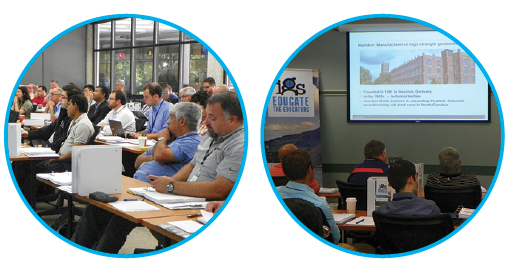
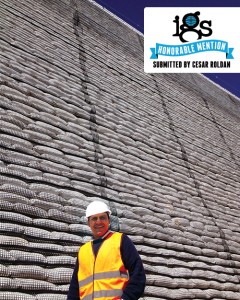 Too many engineers enter the field without state-of-the-art geotechnical knowledge, because their formal schooling overlooks a key piece of modern practice: geosynthetics.
Too many engineers enter the field without state-of-the-art geotechnical knowledge, because their formal schooling overlooks a key piece of modern practice: geosynthetics.
Let the geosynthetics community provide resources to teach your students about geosynthetics.
Geosynthetics were the only new class of construction materials developed in the 20th century. Over the past 40 years, they have become fully integrated into all areas of environmental and civil infrastructure design and execution. Their cost-effective, environmentally strong performance has been well documented. In some cases, federal regulations even require their use (e.g., waste management). Today, every major engineering firm has designated geosynthetic experts on staff. Yet, geosynthetics are taught in less than 45 engineering programs in North American colleges and universities. This has produced an enormous knowledge gap.
Multiple geotechnical and geosynthetics professional societies and organizations are joining together to sponsor a geosynthetics education program specific to supporting educators. “Educate the Educators: A Geosynthetics Training Program for University Professors” will be held 28 – 29 July 2015 in Austin, Texas. This program will provide core geosynthetic content, background information, and materials for use in the classroom so that participants may include geosynthetics in their engineering curricula. The event presents a single 50-minute class on geosynthetics for the undergraduate level; but it also provides a framework for additional class content and resources up to and including a graduate-level class on geosynthetics.
Please apply on line at: http://www.ifai.com/forms/educatetheeducators
The sessions will be led by Dr. Richard Brachman of Queen’s University, Dr. Jorge Zornberg of The University of Texas at Austin, and field veteran Barry Christopher.
This is a non-commercial event being conducted under the auspices of the IGS North America and created by the International Geosynthetics Society , and supported by the Geosynthetic Institute, the Geosynthetic Materials Association, and other industry groups and companies.
There are approximately 40 seats in the course. Successful applicants will be provided with hotel, meals, and transportation in Austin. Successful applicants will need only to fund their travel to Austin.
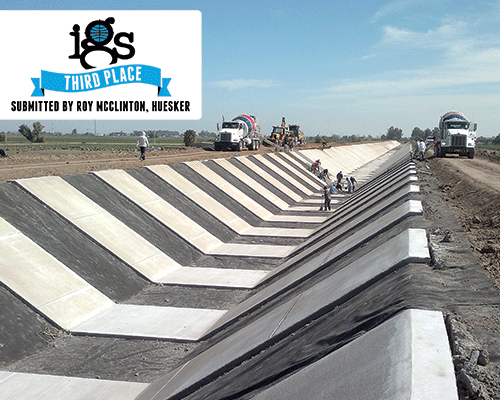 When: 28 – 29 July 2015 Where: Austin, Texas
When: 28 – 29 July 2015 Where: Austin, Texas
In applying for participation, please include:
Applicants will be notified of their enrollment status during the second week in June. Priority will be given to those individuals judged to have influence over the content of the programs at their respective institutions.
APPLY ONLINE TO PARTICIPATEPlease apply today. We encourage you to spread the word on this program to your colleagues in education. Spaces are limited, so act promptly. Please contact me using the information below if you have any additional questions.
Sincerely,
Boyd Ramsey
Chief Engineer – GSE Environmental LLC
GMA Chairman
IGS Council Member
Co-Chair IGS Technical Committee on Barriers
Co-Chair IGS North America Educate the Educators Program
+1.281.797.6183
 Why are your students, students from your alma mater and other Universities you hire from not graduating with knowledge of the “state of the art” of geotechnical engineering practices?
Why are your students, students from your alma mater and other Universities you hire from not graduating with knowledge of the “state of the art” of geotechnical engineering practices?
Let the geosynthetics industry teach you how to teach your students about geosynthetics.
Geosynthetics are the newest addition to “state of the art” engineering design and execution. Used for over 30 years, geosynthetics are critical to environmental and infrastructure civil construction. Geosynthetics are cost-effective, environmentally friendly and in many cases required by federal US regulations. Every major engineering firm has designated geosynthetic experts on staff.
Yet geosynthetics are taught in less than 45 engineering programs within the universities in the North America.
All of the geosynthetic industry societies and organizations are joining to sponsor a program to provide content and knowledge for geosynthetic education. Called “Educate the Educators: A Geosynthetics Training Program for University Professors.” It will be held in July 2015 in Austin, Texas. This program will provide content, materials and background to include geosynthetics in your universities engineering curriculum. The event presents a single 50 minute class on geosynthetics for the undergraduate level but also provides a framework for additional class content and resources up to and including a graduate level class on geosynthetics.
APPLY ONLINE TO PARTICIPATEThe sessions will be led by Dr. Richard Brachman of Queen’s University, Dr. Jorge Zornberg of The University of Texas and Barry Christopher. This is a non-commercial event being conducted under the auspices of the North American Geosynthetics Society and supported by the International Geosynthetics Society, the Geosynthetic Institute, the Geosynthetic Materials Association and other industry groups and companies.
With the exception of travel to and from Austin, all expenses will be paid. Priority will be given to those individuals judged to have influence over the content of the programs at their respective institutions.
Dates: July 28-29, 2015
Location: Austin, Texas
What is needed to apply: Copy of CV, listing of courses taught and a short commentary telling us how you can include this content in your universities curriculum.
We encourage you to both apply today and to spread the word on this program to those colleges and universities we may not reach. Please act promptly, spaces are limited. Please contact me using the information below if you have any additional questions.
APPLY ONLINE TO PARTICIPATESincerely,
Boyd Ramsey
Chief Engineer – GSE Environmental LLC
GMA Chairman
Co-Chair IGS Technical Committee on Barriers
Email: BRamsey@GSEworld.com
Phone: +1.281.797.6183
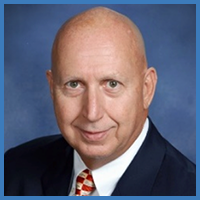 Event: NAGS 2014 Webinar Series: Presentation #2
Event: NAGS 2014 Webinar Series: Presentation #2
Date: Wednesday July 9, 2014, 1:00 – 2:00 pm EDT
Location: Online Webinar
NAGS is very pleased to announce the 2014 Webinar Series:Presentation #2:
“Composite Drainage Nets – Design and Testing”
Presented by:
Bob Mackey, P.E., BCEE
S2L, Incorporated
Maitland, Florida, USA
DATE: Wednesday July 9, 2014, 1:00 – 2:00 pm EST
ABSTRACT: The development of composite drainage nets (CDNs) (a.k.a. “geocomposites”) has advanced from the initial biaxial nets to tri-axial nets to the current composite drainage products of various geosynthetic materials and structures. The use of CDNs requires a fundamental knowledge of the CDN components and the specifications for those materials.
This North American Geosynthetics Society webinar will address the various design, testing and installation issues one must consider with composite drainage nets. Issues include:
ABOUT THE SPEAKER: Mr. Mackey is a civil/environmental engineer with 28+ years of experience in the solid waste management field. Bob is currently president of the North American Geosynthetic Society and Chairman of the ASTM International Committee D35on Geosynthetics. Mr. Mackey is an adjunct professor at the University of Central Florida, former co-instructor for the ASCE continuing education course “Design of Waste Containment Liner and Closure Systems,” and a member of ASCE’s Body of Knowledge Committee, 2nd Edition. Bob has received ASTM’s Award of Merit (the association’s highest award), and he has been honored with the designation of Fellow by ASTM, ASCE and the Florida Engineering Society.
PRESENTATION #2 REGISTRATION FEE:
$100 – Presentation #2 MEMBER Fee: NAGS / CGS / IGS
$300 – Presentation #2 NON-MEMBER Fee ( Save money and become a member of NAGS today! )
$25 – Presentation #2 NAGS Student Member Rate ( Students may apply to NAGS at no charge for membership! )
PDHs: Professional development credit will be available for each participant paying a registration fee.
GROUPS: Small groups of up to five people are welcome to participate for one registration fee. Groups larger than five must pay a second registration fee.
REGISTER HERENOTES: All fees are in USD. Why not join NAGS for $75 USD? Please see www.nags-igs.org for details.
NAGS – Providing leadership in advancing the education and research of geosynthetics
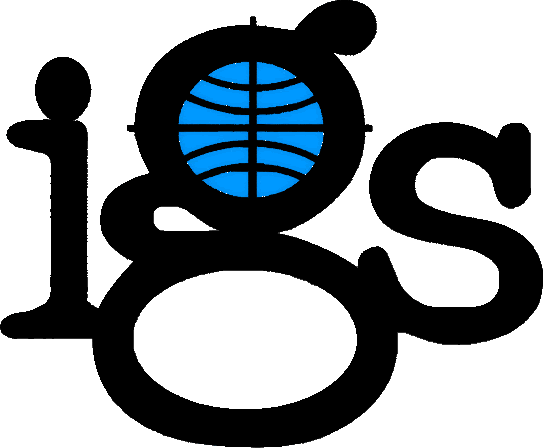 A wide variety of information is available on the IGS web site many documents are publicly available others are available only to members.
A wide variety of information is available on the IGS web site many documents are publicly available others are available only to members.
In 2012 the IGS Technical Committee on Soil Reinforcement in conjunction with the IGS Website Task Force began an effort to digitize all of the IGS Proceedings (where copyright was attainable). This proceedings library is quickly being populated with the vast and expansive technical history of the IGS Conferences. This Proceedings Library is available in the Members Only section of the IGS Website. All NAGS members have unlimited access to this valuable resource!
In addition the resources segment of the IGS website has a good offering of technical leaflets, videos, power point presentations and other educational items. To access a full list of these documents and presentations please visit the IGS Website Resources Section.
Some of the documents you will find there include:
Recommended Mathematical and Graphical Symbols
Geosynthetics in Seismic Applications
Geosynthetics Classification
Geosynthetics Functions
Specification Guide
Geosynthetics in Unpaved Roads
Geosynthetics in Road Engineering
Geosynthetics in Railroads
Geosynthetics in Walls
Geosynthetics in Slopes over Stable Foundations
Geosynthetics in Embankments on Soft Soils
Geosynthetics in Landfills
Geosynthetics in Wastewater Treatment
Geosynthetics in Hydraulics Projects
Geosynthetics in Drainage and Filtration
Geosynthetics in Erosion Control
Geosynthetics in Agricultural Applications
And much more!
To access a full list of these documents and presentations please visit the IGS Website Resources Section.